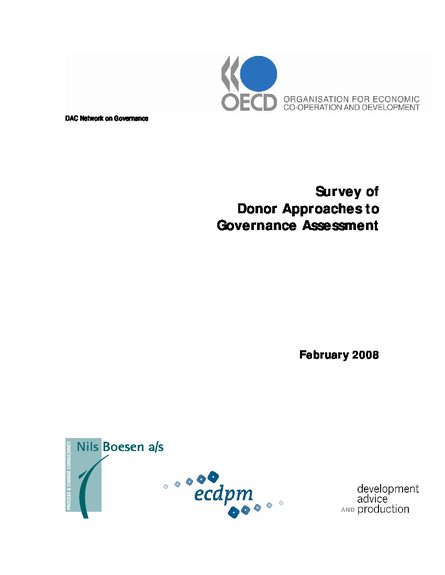
Many development agencies are engaged in assessing governance. What are their approaches and how can these be more effectively harmonised? This study from the Organisation for Economic Cooperation and Development surveys donors' use of general and thematic governance assessments.
Most approaches are driven by policy dialogue, detailed planning of governance enhancement activities and strategic decisions regarding aid to specific countries. Linkage to a donor's programme, demand from the field and removal of institutional disincentives are important in determining how governance assessments are used.
Governance assessment approaches seem mostly to have been developed in response to individual agency needs and concerns. There appears to be less interest in learning about the links between governance factors and development outcomes in different country contexts. This might explain why the underlying assumptions behind particular general governance assessment tools are usually not explicit and that, despite many differences, there are also striking similarities between approaches.
Governance assessments cover a broad range of issues and processes. General governance assessment tools are mostly applied to all partner countries of a given donor, whereas thematic tools are applied more selectively. General assessment tools focus mostly on political systems and public administration. Most tools address social governance issues including pro-poor spending and the access to and effectiveness of service delivery. The timeframe varies with different approaches: some take a snapshot, some look at trends over three to four years, while political analysis oriented tools look at longer historical trends.
The wide spectrum of factors, actors and time perspectives in various assessment tools is due to the fact that they are all based on different sets of underlying assumptions and values. Findings include the following:
Five factors appear to enhance the use of the results of governance assessments: linkage to programming; field-driven demand for the assessment; participation of donor staff in the process; removal of institutional disincentives such as disbursements pressures and incentives to demonstrate short term impact; and a link to conditionalities, which may provide effective incentives for countries to improving their ranking in assessments.
Most tools use secondary data for their assessments. Almost all draw on perception-based data primarily derived from surveys and expert groups. Assessment tools producing indicator sets tend to be perceived as more methodologically rigorous than other tools.
Donor assessments usually involve domestic stakeholders from government, civil society and the private sector. Involvement ranges from informing the government about the assessment, to consultation on timing, scope and process, and validation of findings.
